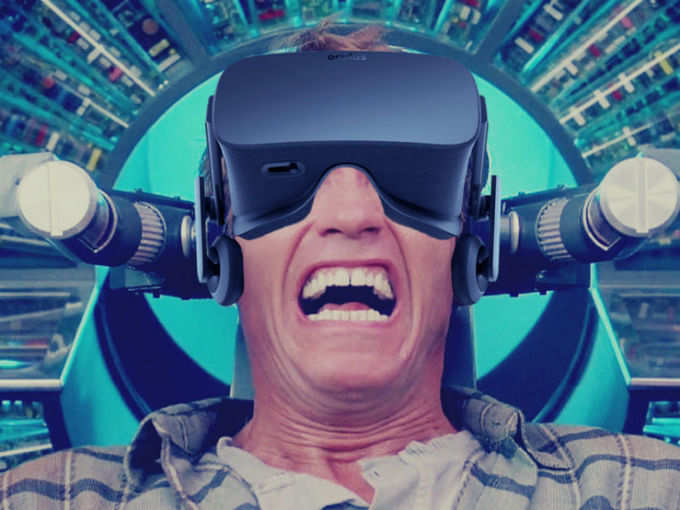 We're nearer than we've ever been to the fabled VR dystopia anticipated in 80s cyberpunk. We have affordable headsets, a lot of processing power to create virtual universes, and the biggest enterprises around (Sony, Microsoft, Facebook, Google, and so on.) are putting down big bucks on research and development to push the medium.
We're nearer than we've ever been to the fabled VR dystopia anticipated in 80s cyberpunk. We have affordable headsets, a lot of processing power to create virtual universes, and the biggest enterprises around (Sony, Microsoft, Facebook, Google, and so on.) are putting down big bucks on research and development to push the medium.The basic problem hasn't changed since the Virtual Boy. It's movement. In
What problems are we talking about here?
Oculus’ risk and safety guide lists these as potential symptoms
• Seizures
• Loss of awareness
• Eye strain
• Eye or muscle twitching
• Involuntary movements
• Altered, blurred, or double vision or other visual abnormalities
• Dizziness
• Disorientation
• Impaired balance
• Impaired hand-eye coordination
• Excessive sweating
• Increased salivation
• Nausea
• Lightheadedness
• Discomfort or pain in the head or eyes
• Drowsiness
• Fatigue
Desensitization
Desensitization implies that the person is no longer influenced by extreme acts of conduct, for example, violence and neglects to show empathy or sympathy as a result. In a few situations they effectively search out this kind of scenario for the adrenaline rush and sense of power.
This has been seen with gamers, particularly the individuals who play first person shooters or pretending games which involve a high degree of immersion.
Why did it come up short? Buyers didn't need it. Or they didn't feel they required it. If VR can get over that huge hurdle, it will probably have a lot of glorious years ahead. For the time being, VR has an uphill battle to combat.